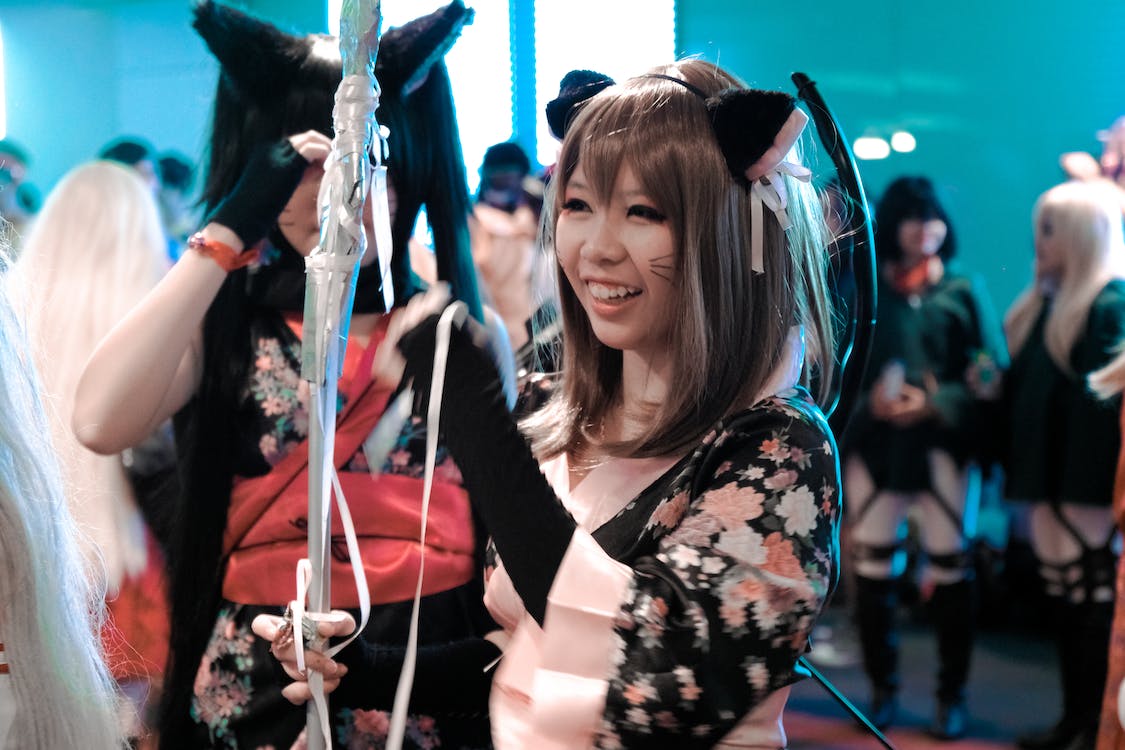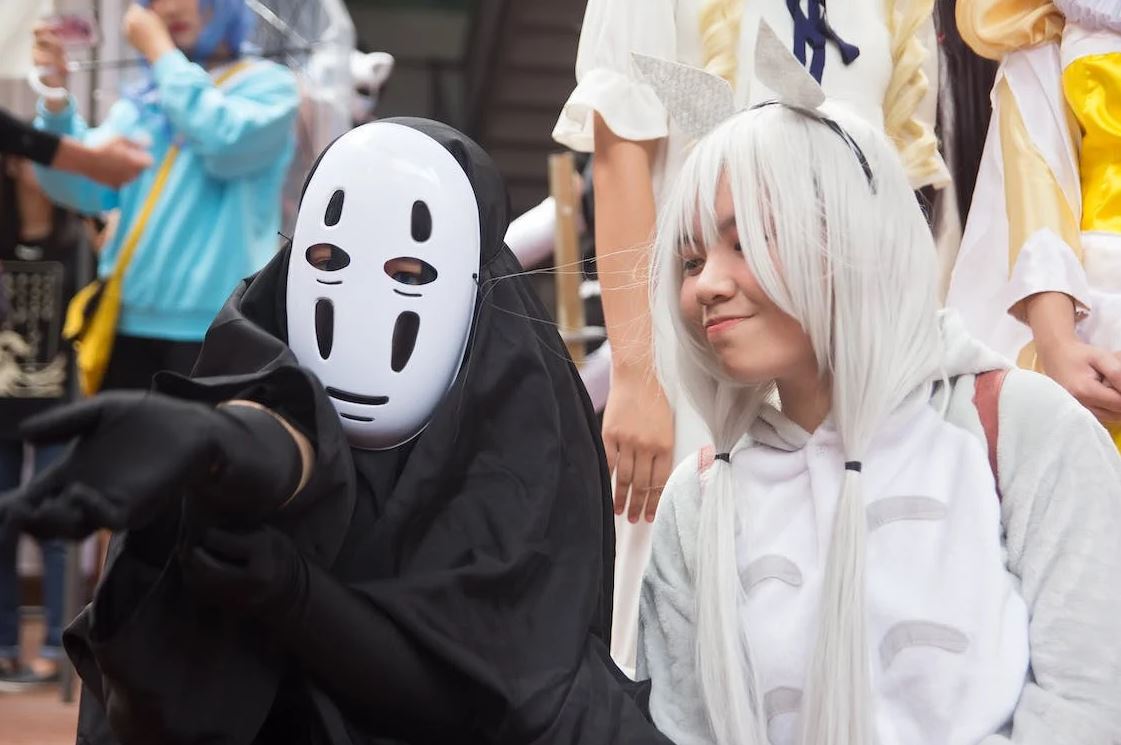The increasing trend of cosplay becoming people’s main hobby and career is something that caught a lot of people off guard, especially those who aren’t well acquainted with the values and concepts behind why a person cosplays.
In their eyes, they view it as a somewhat childish hobby that adults or teens with way too much free time participate in, without fully realizing why cosplay goes through that much effort to make a cosplay.
Here in this article, I’m going to break down the concepts, values, and psychology of a cosplayer, so follow along to know more.
What is Cosplay?

Cosplaying, in the most rudimentary definition refers to “costumed playing“.
As in role-playing while fitted with a costume, that may or may not belong to a fictional figure, character, or persona.
Costume
You can’t expect to see a cosplayer without their wacky and almost awe-inspiring costumes, I mean wearing crazy costumes is like their whole deal right? Well, it’s a lot more complicated than that. Also, lately, we’ve been seeing increasing complexity and distinctive costumes being made, sometimes by actual professionals.
This means that cosplaying is not a cheap pastime, but rather a very expensive one. For your reference, here is a table that shows the basic prices of a costume.
| Accessory | Price (average) |
| Wigs | 25$-40$ (depending on the size and texture) |
| Outfits | 100$-1000+$ (depending on the fabric and complexity) |
| Shoes | 5$-20$ (it doesn’t have to be the highest quality) |
| Fake tattoos/scars | $2-$5 |
Cosplay is an art form that requires a lot of creativity, time, and money. It can be a difficult process to create a costume and make it look like the character you’re trying to portray. The best cosplayers are able to capture the look, feel, and personality of their characters in their costumes.
Cosplay is both an art and a craft. The costumes that cosplayers create are truly works of art, but the actual construction of the costume can be difficult and time-consuming.
Playing
This second part of cosplaying is the actual differentiator and is perhaps the main concept behind cosplaying, This playing refers to “role-playing” which means that a cosplayer who puts on a costume, proceeds to completely act, think and converse exactly like the character they are cosplaying as.
Although the complexity of cosplayers’ outfits is often a point of contention, it is their mannerisms that really make or break a cosplayer. A cosplayer’s mannerisms can be as simple as moving one’s arm in a certain way (though this depends on the specific character) or as complex as mimicking a character’s speech patterns and gestures.
When did cosplay begin?
Though many people believe cosplay began in Japan, it actually began in America in the late 1930s.
Nobuyuki Takahashi, the creator of Studio Hard, didn’t bring the tradition from a science fiction conference in Los Angeles to Japan until 1984 when he encouraged anime enthusiasts to do the same at their own gatherings.
Whether you’re a fan of the top cosplayers in America or simply interested in fandom history, it’s useful to understand how cosplay evolved into the thriving global community that it is today.
What exactly is a cosplay model?
A cosplay model, often known as a cosplay idol, dresses up as characters from anime and manga or video games.
Good cosplayers are perceived as flesh-and-blood versions of fictitious characters, in the same way, that film performers become associated with specific roles in the public consciousness.
Cosplay outfits can range from basic themed clothing to intricately complex costumes. It is distinguished from Halloween and Mardi Gras costume wear in that the goal is to impersonate a specific character rather than to reflect the culture and symbolism of a holiday celebration. As a result, when dressed up, some cosplayers try to emulate the effect, mannerisms, and body language of the characters they depict.
What are the Aims of a Cosplayer?

Friendship, craftsmanship, and character accuracy, these 3 basic values are the amalgamation of a cosplayer’s values and goals of putting on a persona.
For a cosplayer, it’s not the amount of money put into a costume, but rather the time and effort took to build up a costume and personalize it to one’s own persona. That’s what’s valued within the community.
Cosplay is an outward manifestation of your passion, respect, and love for your favorite movie, game, television show, Anime, or comic character.
Portraying this passion and respect is something cosplayers take very seriously.
This is why being accurate and honest about a character’s personality by role-playing them as quintessentially as possible is the best way a cosplayer can pay homage to characters or franchises they resonate with.
In short, it’s a way to express your respect, make friends, build a community, and improve upon crafting skills, while having a blast and enjoying yourself.
Is Cosplay Bad?
No, well maybe sometimes yes. This is an unquantifiable question that is highly situational, there’s no objective answer to this.
If we are to delve into what cosplay being bad means, we get a few options:
- It’s a bad and time-wasting hobby
- It’s bad for the mentality of a cosplayer
- It’s bad for the safety of a cosplayer.
So let’s discuss these options briefly.
Bad as Productive Hobby
Cosplaying being a bad hobby is not a hot-take of any sort, rather it’s something many non-cosplayers agree upon.
Wonder why that is? Well, it’s likely because of how the media, especially social media portrays cosplay. Cosplay is shown as a hobby with no real-life productive value.
I mean you spend time, money, effort, and travel cost to make a costume for attending a convention, but in the end, what does a cosplayer achieve? Was it productive, did they help society advance, did they at least help themselves? These are all questions non-cosplayers think about.
Well, it’s productive in two ways: you improve upon your creativity and craftsmanship, I mean making a costume definitely requires some skill right? You also build personal and communal connections while attending a convention, making life-long friends and sometimes even soulmates is not something that is very uncommon in this hobby.
Bad for Mental Health
Additionally, contrary to popular belief, cosplay is now viewed as a way to improve mental health, I’ll take a case study done by Robin S. Rosenberg, a clinical psychiatrist at the University of California, San Francisco.
She quotes “when a cosplayer chooses a specific attire, they are often trying to tap into a particular character — or amalgamation of characters — because something about that vocation resonates with them on a personal level“.
According to Rosenberg, certain costumes can help some people work through personal issues. For someone dealing with trauma, Batman, for example, can be an especially meaningful cosplay choice.
So yeah, it sort of helps people deal with past trauma. I’ll also put a quote from an anonymous cosplayer below.
Cosplaying has helped me a lot when it comes to coping and has had a positive impact on my mental health. I struggle with a lot of things including anxiety and major depressive disorder and also physical health issues (POTS and EDS) that affect me mentally as well. Cosplaying helps temporarily put off the stress of my health.
Moon — An anonymous Cosplayer
Bad for Safety

As of recent, cosplay is a potentially dangerous hobby, especially for women and children, and is a topic spreading like a wildfire. This course is highly exaggerated but it’s not entirely untrue.
There have indeed been cases of women cosplayers facing harassment and assault due to wearing provocative costumes.
Let me get the elephant out of the room. There are obviously creeps and weirdos, that make life a living hell for women, and surely, they’ll tend to target attractive cosplayers. This problem has been raging on for quite a while.
However now, cosplay conventions are holding meticulous control over the safety of their attendees and have a no-tolerance policy for this sort of behavior, going as far as having many suspects arrested. So as long as you stay within a convention’s premises, your safety is guaranteed.
Conclusion
- The growing trend of cosplay becoming people’s primary hobby and career has taken many people by surprise, particularly those who are unfamiliar with the values and concepts underlying why people cosplay.
- The most basic definition of cosplaying is “costumed playing.” As in role-playing while dressed in a costume that may or may not belong to a squabbling figure, character, or persona.
- Certain costumes, according to Rosenberg, can help some people work through personal issues.
Batman, for example, can be an especially meaningful cosplay choice for someone dealing with trauma. - Cosplay has recently been identified as a potentially dangerous hobby, particularly for women and children, and is a hot topic.
Other Articles
- Is Spirited Away Worth Watching?
- Why You Should Watch Death Note?
- Can Anime Be Harmful To You? (Worth A Read)
Click here to view the visual Story version of this article.